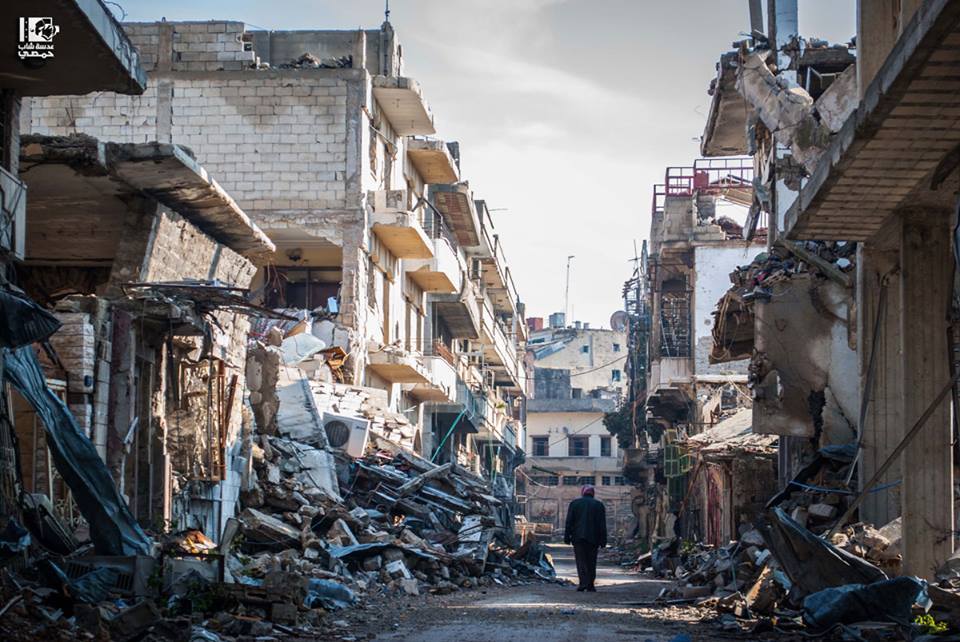Bashar al-Assad’s government in Syria is carrying out a national strategy to change the demographics of the country. This strategy includes besieging, starving, killing and transferring people in a number of cities and neighbourhoods associated with resistance to his government.
The latest example of this strategy is Aleppo, but three years ago the same strategy was carried out in Homs. Today, PAX and The Syria Institute (TSI) are publishing the report “No Return to Homs” documenting how this strategy was executed.
“It was heartbreaking to see the images and read the messages from people in Aleppo. But Aleppo isn´t even the half of it. The same thing was done to people in Homs and to people in Darayya, and it looks like the same thing will happen to residents of Madaya and Douma. This isn´t piecemeal — it´s a thought-out, planned campaign to destroy entire communities,” says PAX’s Marjolein Wijninckx. Because of their systematic nature, these are not only war crimes, but crimes against humanity.
Homs first of many
In 2014, more than two years before the devastating scenes from eastern Aleppo, Homs became the first major urban centre in Syria to succumb to the government’s siege and destroy strategy. The tactics used to depopulate Sunni-majority neighbourhoods of Homs city became a blueprint for places like Darayya and Aleppo in 2016. What happened to Homs and its residents shows what may happen to the newly depopulated areas, and to people in places like Madaya and Douma in the coming year.
Reconstruction for other people
In the meantime, the UN and other humanitarian agencies have already started reconstruction in Homs and are preparing to do so in Aleppo and other areas, even though the people driven out of the communities are not involved and will not benefit from this reconstruction. Zaher, a former resident of the Haswieh neighbourhood of Homs, says “People left from fear after the massacres, not because buildings were destroyed.” He and others who fled are still scared to return. Rami, another resident who fled, says “There is no way I would ever return, it would be impossible. I would love to go back but not to what it has become.”
“War crime dividend”
As long as former residents such as Zaher and Rami are not involved, PAX and TSI warn that the international actors already engaged in reconstruction risk paying the government a “war crime dividend”. In other words, helping the Syrian government benefit from the war crimes it committed. This will only exacerbate social divisions and undermine future reconciliation efforts. Therefore, PAX and The Syria Institute call on the UN and other international actors to condition reconstruction support on concrete benchmarks for political transition, as well as consultation with the displaced population before areas undergo reconstruction.




